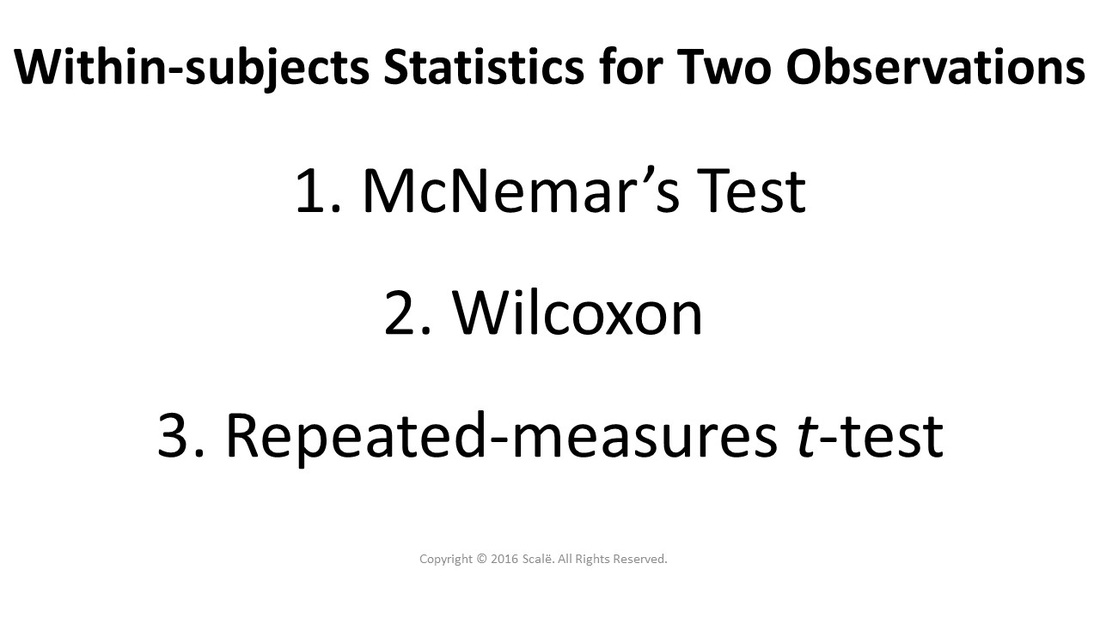Within-subjects statistics for two observations
Within-subjects statistics can compare two observations of an outcome
Within-subjects statistics for two observations of an outcome is used traditionally to compare a "pre" observation of an outcome to a "post" observation of an outcome. Within-subjects statistics for two observations can be used to see how much change or stability occurs across time as a result of treatment or intervention. At this point when choosing a statistical test for comparing two observations of an outcome, the next question to be answered is what the scale of measurement is for the outcome. This ultimately leads to the correct within-subjects statistical test to answer the research question.
What is the scale of measurement for the outcome in the within-subjects analysis?
The outcome represents numerical designations or categorical values that describe events or group membership.
The outcome variable is measured using an ordered numerical continuum, such as a Likert scale.
The outcome variable is an actual number that provides both a measure of distance and magnitude due to having a "true zero."
Statistician For Hire
DO YOU NEED TO HIRE A STATISTICIAN?
Eric Heidel, Ph.D. will provide statistical consulting for your research study at $100/hour. Secure checkout is available with PayPal, Stripe, Venmo, and Zelle.
- Statistical Analysis
- Sample Size Calculations
- Diagnostic Testing and Epidemiological Calculations
- Psychometrics

